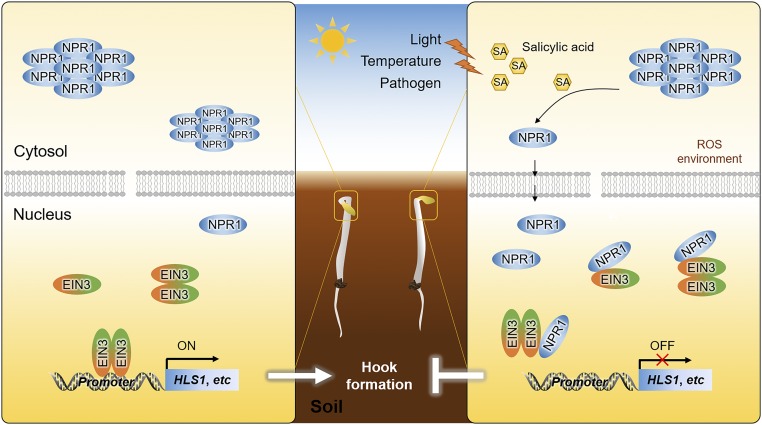Figure 8.
A Working Model of NPR1-Mediated Inhibition of Hook Formation through the Repression of EIN3 Activity.
When seedlings protrude through the soil, mechanical compression induces ethylene production and thus EIN3 accumulation in the nucleus. EIN3 can form homodimers, which activate the transcription of HLS1 and other hook formation genes, promoting apical hook formation. Under low SA concentrations, NPR1 protein is mostly located in the cytoplasm in the oligomeric form. Upon exposure to environmental stress signals such as light, heat, cold, and pathogen infection, the level of SA increases in etiolated seedlings, wherein NPR1 oligomers are converted into monomers and translocate into the nucleus. Activated NPR1 interacts with EIN3 through its N-terminal BTB domain and impedes the binding of EIN3 to its target genes, including HLS1. Hook formation is therefore repressed in SA-induced seedlings.

